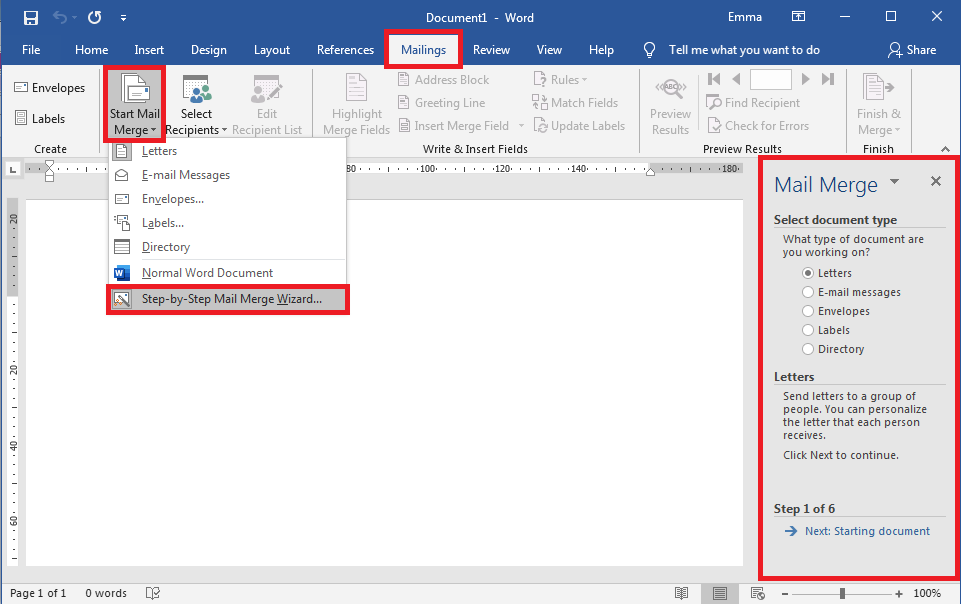

For example, FirstName, LastName, and Address are header rows. The first row of the table is the header row and contains the field names for the data source. Word can automatically insert all the appropriate greeting text, title, and name fields at once, so you don’t have to insert the text and required merge fields yourself.ĭata source information is stored in a table. Word can automatically insert all the appropriate address fields at once, so you don’t have to insert the five or six merge fields yourself.Ī group of merge fields that make up the greeting line of a mail merge document, such as “Dear Mr.
MAIL MERGE CHECK BOX WORD ZIP
For example, a single address is made up of a name, street address, city, state, and zip code. An example would be: Dear «FirstName».Ī group of merge fields that make up an address in a mail merge document. Merge fields appear with chevrons (« ») around them. For example, a single record would include a person’s first and last names, address, phone number, and date of birth.Ī merge field is where you want to insert the information from a data source into a main document. For example, the field «LastName» would only contain people’s last names.Ī record is an entire set of data fields that relate to a single thing or person. Excel spreadsheets, Access databases, or Word document tables are good examples of data sources.Ī data category that stores a specific piece of information. For example, it has records containing the names and addresses of the people a mail merge letter is sent to. The starting document contains the field names for the variable information, like the names and addresses that will be inserted.Ī file that contains the information to be inserted into the main document during a mail merge.
MAIL MERGE CHECK BOX WORD UPDATE
If it doesn’t look right, return to Step 4 to edit the fields to be merged and remember to update labels with the fields to be merged.

Step 4: Write your letter/ arrange your labels Review the data source and use the check boxes to add or remove recipient details from the merge.Select the file, and click Open, if it is an Excel file, select the sheet (worksheet), click OK.Click Browse and locate the existing file on your computer.This can be stored in a Word or Excel file, where each row contains individual recipient information In this step you will locate your file of recipient information (name, address). Select the Label Vendor and Product Number (this information is found on the packet of labels that you will use (Avery A4/A5, L7159). If you’re creating Labels, click Label Options.If you’re creating Letters select Use the current document.Select the document type (Letters, Labels).Click on Start Mail Merge, then Step by Step Mail Merge Wizard.Open your Word document, you can begin with a blank document or you can write a letter.2) Your recipient information (name, address) stored in a separate file, such as an Excel Spread sheet.

You will need: 1) A letter or blank document. Use the Mail Merge step-by-step Wizard when you want to create a set of labels or documents such as a standard letter that is sent to multiple recipients. (Instructions are based on Microsoft Word 2007, but are similar in Microsoft Word 2010).


 0 kommentar(er)
0 kommentar(er)
